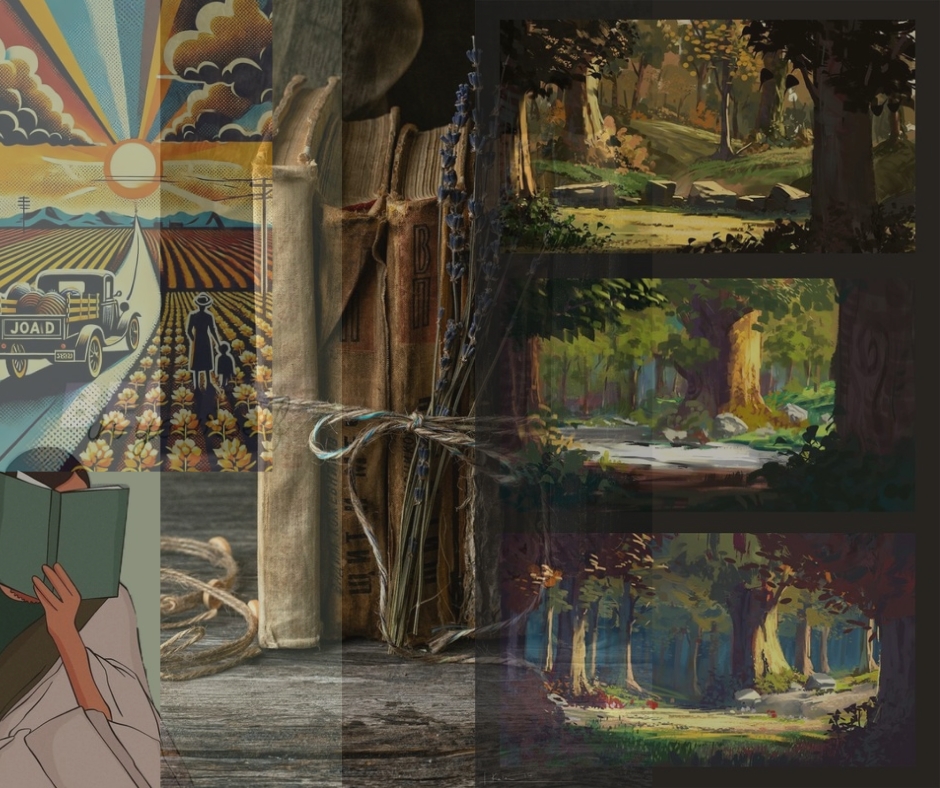How to Write a Murder Mystery Story

One evening, Priya came running over to my place with a notebook in her hand and an excited spark in her eyes.
“Guess what?” she said, practically out of breath.
“What, Pri? Did you win a million dollars or discover aliens?” I teased.
She giggled. “No silly. I read this amazing mystery book where someone went missing, and the main character solved the case in the most unexpected way!
Now I want to write one too!”
I smiled. “Aha! So, the mystery bug bit you, huh?”
She nodded. “But... I have no idea how to write one. Mysteries seem tricky.”
I pulled out a chair. “Come sit. Let me tell you a secret—writing a mystery is just like solving a puzzle.
And today, I’ll be your guide.”
Create Characters Who Feel Real (and a Bit Suspicious)
“Okay, Pri,” I began, “the first thing you need is a good set of characters.
A mystery works best with interesting people in it.”
Priya pulled out her pen, ready to jot down everything.
“You’ll need a few different types of characters to begin with,” I explained, counting on my fingers:
- The Solver – This is your main character, the one who will solve the mystery. It can be a kid, a teacher, a librarian, or even a pet with detective skills!
- The Victim – Someone gets hurt, disappears, or is affected in some way. The story exists because of the victim.
3.The Suspects – These are characters who might have done it. Each should have:
3.1 A motive or a reason to do it,
3.2 An opportunity to do it,
3.3 Maybe a secret they don’t want revealed.
4. Side Characters – Friends, helpers, witnesses—characters who add flavor, clues, or confusion to the case.
Priya looked thoughtful. “So even the side characters need to be interesting?”
I laughed, raising an eyebrow and shrugging. “Exactly!” I said.
“Everyone should feel like a real person. Give them a little backstory.”
I continued, leaning forward, tapping my chin thoughtfully. “Think about their personalities. Are they sneaky? Nervous? Loud? Mysterious? These traits help the reader suspect or trust them.”
I leaned in and whispered with a grin, as if I were sharing a secret in real life, “Oh, and make sure every character has a reason to be in your story. No random extras just standing around.”
We both started laughing at that image.
Now Build a Plot That’s Like a Puzzle
“Now that you have your characters,” I said, “you need something mysterious to happen.”
Priya whispered dramatically, “Like a murder?”
I grinned. “Sure, but it can also be a missing object, a creepy message, or a stolen trophy.
The key is to create a mystery that your main character needs to solve.”
“Okay... but how do I plan that?” she asked.
I pulled out a blank sheet of paper. “Here’s how we’ll break it down.
Think of your story like a puzzle with these pieces:”
- The Crime or Mystery: What exactly happened? Was something stolen? Is someone missing? Did a spooky event occur?
- The Suspects: List who had a motive and chance. What might each suspect gain from the mystery?
- The Clues: These are tiny details the reader can follow. Maybe a footprint in the garden or a broken watch left behind.
- Red Herrings: These are fake clues. They mislead your reader on purpose to make the final reveal more surprising.
- The Twist: Just when your reader thinks they’ve solved it… BOOM! You surprise them with something unexpected.
- The Reveal: In the end, your detective (or main character) puts all the pieces together and solves the mystery.
Priya’s eyes were wide. “This is starting to sound like a game!”
“It is, my sweetu,” I said. “A mind game. And you’re the game master.”
Create Twists That Flip Everything Around
“Okay, but how do I keep people surprised?” she asked, leaning forward.
I explained, “That, Pri, is where plot twists come in.”
“And what are those?”
I continued, “A plot twist is when the reader thinks they know what’s happening, and then—Surprise!—something changes.”
Her eyebrows rose as she reminisced and said thoughtfully, “Like in that one book where the best friend turned out to be the villain?”
Her expression shifted as if she were rewatching the scene unfold right in front of her.
“Exactly!” I said. “But here’s the trick: a twist has to make sense. Don’t just pull it out of thin air.” I said, waving my hand dramatically like I was snatching something invisible from the air.
Priya seemed to be a bit concerned. “So how do I make a good one?”
“Easy. First, make your readers believe something. Maybe a character is acting suspicious or lying.
Then, reveal new information that changes how we see them.”
I continued, “Imagine your readers think the janitor is the thief. He’s always sneaking around.
But later, you reveal he was hiding love letters… and the real thief was his niece, who used his keys!”
Priya laughed. “That’s so sneaky!”
I laughed and said, “Right? That’s the fun. Add one or two well-planned twists to make your mystery shine.”
The Idea Is to Hook Your Reader from the Start
“Now, let’s talk about beginnings,” I said. “You need a hook”, I bent my index finger like a hook. “something that grabs attention.”
Priya nodded excitedly, eyes wide with energy. “Like... starting with the crime?”
“Yes! Or a creepy note, or something strange happening. Let’s try a few.” I continued, “Let’s say—”
- The trophy was gone. But the window was still locked.
- When I got to school, the principal was missing, and someone had written Find Me on the blackboard.
- I opened my locker and found a note: You’re next.
Priya acting, wrapping her arms around herself like she felt a chill down her spine. “Oooh. I want to read all those!”
“Exactly! That’s what a hook does. Try writing a few, then pick the best one.”
She scribbled quickly, her eyes sparkling.
“Next,” I said, “ Keep the Suspense High…let’s make sure your reader stays curious all the way through.”
“Suspense, right?”
“Yep. That feeling of ‘What’s going to happen next?!’ Here’s how you build it:”
Don’t reveal the truth too soon. Keep readers guessing.
Give your main character challenges... A suspect lies... A clue disappears... A deadline is approaching.
End chapters with cliffhangers. Questions, surprises, or sudden danger make readers keep turning pages.
“Like in movies,” Priya said. “When the lights go out right before the answer.”
“Exactly!” I said. “Suspense is what keeps your mystery exciting.”
“Now, here’s a writing trick pros use,” I said. “Instead of telling your readers what’s happening—show it, don’t tell.”
She looked confused. “What do you mean?”
“Let me show you.”
I wrote two sentences:
- Telling is: “Raj was scared.”
- Showing is: “Raj’s hands trembled as he backed away, his eyes darting to the door.”
“Ohhhh,” she said. “The second one paints a picture!”
“Exactly. Think like a movie director. What would the audience see or hear?
Use actions, sounds, and feelings to bring your story to life.”
Priya practiced one on her own:
“Anita clenched her fists, her eyes narrowed like tiny slits.”
I clapped happily. “That’s it! You’re getting it!”
Make the Mystery a Real Challenge
“Last step, Pri,” I said, holding up my pinky. “Make your mystery hard—but fair.”
Priya looked at me questioningly. “What does that mean?”
I continued, “It means your reader should have a chance to solve it, but it shouldn’t be too easy.”
I explained the two tools she could use:
- Real Clues – These hint at the truth, like a button left at the scene or a story that doesn’t quite add up.
- Red Herrings – These are false clues that trick the reader. Maybe a character looks guilty but isn’t.
Priya grinned. “So it’s like I’m playing detective and villain at the same time!”
I nodded. “Exactly. That’s the power you have as a mystery writer.”
“Ooo... I am exhausted... I’m making a cup of coffee. Would you like one, Pri?”
Priya replied, “Nope... you go ahead.”
So saying, she opened a fresh page in her notebook.
I came back with my coffee and found that Priya had started outlining her first murder mystery.
“I am writing a school play where the lead actress disappears before the show!” she said.
“Great idea,” I said, nodding. “Start with the mystery, add suspects, sprinkle in clues, and don’t forget your twist!”
She eagerly wrote down her characters:
- The Solver: A shy tech crew member.
- The Victim: The lead actress who vanishes.
- The Suspects: The jealous understudy, the director, and a rival student from another school.
- Clues: A broken necklace, deleted emails, and a suspicious prop knife.
I smiled as I watched her build her puzzle piece by piece.
Priya looked up at me as she finished her outline.
“I think this is going to be awesome!”
I winked. “I know it is. Now go solve the mystery, detective!”
Just like Priya, you can write an amazing murder mystery.
All it takes is a good plan, some imagination, and the courage to start.
Let’s review the steps we learned today:
- Create realistic, interesting characters.
- Build a plot like a puzzle—with a crime, suspects, and clues.
- Add twists and turns to surprise your reader.
- Start strong with a great hook.
- Keep the suspense going with tension and cliffhangers.
- Show what’s happening using actions and expressions.
- Challenge your reader with real and fake clues.









